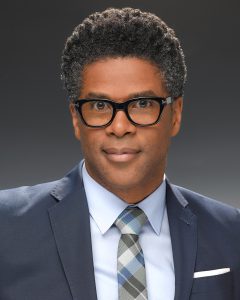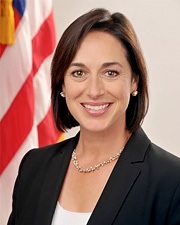By LaMar Hasbrouck, MD, MPH, Executive Director, NACCHO & Karen DeSalvo, MD, MPH, MSc, Acting Assistant Secretary for Health, U.S. Department of Health and Human Services

What will Public Health 3.0 — new model for building healthier communities across America — mean for the nation’s nearly 3,000 local public health departments (LHDs), as they face the ongoing challenge of tackling the full range of factors that influence each citizen’s overall health and well-being? NACCHO and the HHS Office of the Assistant Secretary for Health (OASH) are working together to define what this means in practical terms trying to help LHDs refine their efforts to address the social determinants of health in the communities in which they serve.
 Earlier this year, OASH released Public Health 3.0: A Call to Action to Create a 21st Century Public Health Infrastructure, a report that challenged community leaders, state lawmakers and federal policymakers alike to incorporate health into all areas of governance to address health disparities. The report also highlighted five local communities across the U.S. that are making innovative changes in their communities with comprehensive approaches to public health. These communities have several key things in common – they are:
Earlier this year, OASH released Public Health 3.0: A Call to Action to Create a 21st Century Public Health Infrastructure, a report that challenged community leaders, state lawmakers and federal policymakers alike to incorporate health into all areas of governance to address health disparities. The report also highlighted five local communities across the U.S. that are making innovative changes in their communities with comprehensive approaches to public health. These communities have several key things in common – they are:
- Cultivating strong leadership and building a workforce pipeline;
- Creating a mission-driven, collaborative infrastructure – one that may go through the rigorous PHAB accreditation process to assess capacity;
- Leading for collective impact by developing strategic cross-sector partnerships;
- Innovating to seize opportunities for growth, and recruiting people who have skills, training, or education that are not traditional in the public health field, including community advocates, community organizers, and communications professionals, and by forging partnerships with non-traditional collaborators, including universities and business mentorship programs; and
- Addressing data gaps, and making more granular, de-identified data available to researchers and the community.
Why Now?
We often hear that your ZIP code is more important to your health than your genetic code, and public health not only has to be part of that shift in thinking, we have to be ready to lead. It is time to rethink how we can turn these indicators and social determinants around, and take the lead in making communities healthier. After all, despite spending more on healthcare than any country in the world, the U.S. ranks 34th in life expectancy globally.
Models of Success
It’s easy to approach PH 3.0 with some weariness and trepidation; indeed there have been regular calls over the years to “Do Something Different.” The good news is that many communities across the nation are already doing just that – they have pounded the pavement to develop ambitious plans to change their local health system to foster improvements in their community’s health. Tackling influencers of wellness that fall outside of the scope of the traditional health care delivery system is not only hard work, but it requires dedication and creativity.
The Role of the Chief Community Health Strategist in PH 3.0
You need leaders if you’re leading a charge, and that’s where the Chief Community Health Strategist comes into play. Broadly speaking, a Chief Community Health Strategist (CCHS) isn’t necessarily one person at the top leading the effort; it can be the chief health officer, a group of LHD representatives, or a coalition of those both in and outside the public health field, collaborating and working towards the same goals. Chief Community Health Strategists are public health leaders in their community, engaging with community stakeholders to actively address the social determinants of health inequity. The CCHS should develop strong strategic partnerships with players in other sectors, including civic and community leaders representing both the grassroots and the grasstops —a smaller group of people in targeted areas developing close one-on-one relationships with officials. For in-depth information about the role of the CCHS, read the September 2014 report from the Public Health Leadership Forum, The High Achieving Governmental Health Department in 2020 as the Community Chief Health Strategist.
NACCHO’s Role in Supporting PH 3.0
To best support local public health departments, NACCHO, through its Transformation and Communications Workgroups and teams, will help to develop messaging and a common language about how we talk about our work, how we conduct our business, and how the systems connect. Mindful that many LHDs are doing innovative work, we want to amplify those efforts. For example, if an LHD is doing just one thing to address capabilities, we want to know that so that we can be the agents for positive public health changes. To do this, we need to develop messaging and define action steps. We also invite all of our LHDs to share their ideas about PH 3.0 and whatever you’re doing in your community and health department to advance PH 3.0. LHDs who want to share their best/promising practices can do so via the NACCHO Virtual Community at Transforming Public Health.
Let’s make the work of local health departments across the nation, and Public Health 3.0, a blueprint for strengthened public health for years to come.